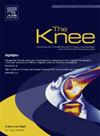胫骨外侧平台骨折后改变的长期患者感知结果——一项匹配登记的队列研究,762例患者,平均随访11年
IF 2
4区 医学
Q3 ORTHOPEDICS
引用次数: 0
摘要
虽然有几项研究调查了外侧胫骨平台骨折(LTPF)的结果,但长期随访数据(超过10年)仍然有限。我们的目的是比较LTPF后患者报告的长期结果与没有LTPF的年龄和性别匹配组的结果。研究设计是一项国家匹配队列研究,包括1996年1月1日至2017年12月31日期间在丹麦因LTPF入院的所有患者。主要结局指标是膝关节损伤骨关节炎结局评分(oos)。配对组由没有LTPF的丹麦公民组成,在年龄和性别上与LTPF组匹配1:10。结果共纳入1621例LTPF患者。其中,762人(47%)回应了调查邀请。受访者的平均年龄为61.5岁,65%为女性,骨折后的平均随访时间为11.2年,从6.1年到26.0年不等。比赛组由16210名市民组成。其中,5050人(31%)回应了调查邀请。受访者的平均年龄为63.3岁,其中72%为女性。与匹配组相比,ltpf患者报告的KOOS亚量表得分显著降低。kos分量表得分的差异范围从日常生活活动(ADL)的平均7.2到运动和娱乐活动(sport /Rec)的平均20.4。结论:结果表明,与年龄和性别匹配的无外侧胫骨平台骨折的人群相比,ltpf与相当多的患者长期感知的膝关节主诉相关。本文章由计算机程序翻译,如有差异,请以英文原文为准。
Altered long-term patient-perceived outcome following lateral tibial plateau fractures – A matched register-based cohort study of 762 patients with a mean of 11 years of follow-up
Background
While several studies have examined lateral tibial plateau fracture (LTPF) outcomes, long-term follow-up data (exceeding 10 years) remain limited. We aim to compare the long-term patient-reported outcomes following LTPF to that of an age- and gender-matched group without an LTPF.
Methods
The study design was a national matched cohort study, including all patients admitted with an LTPF in Denmark between January 1, 1996, and December 31, 2017. The primary outcome measure was The Knee Injury Osteoarthritis Outcome Score (KOOS). The match group consisted of Danish citizens without LTPFs matched 1:10 to the LTPF group on age and gender.
Results
Total 1621 patients with a LTPF were included. Of these, 762 (47 %) responded to the survey invitation. The mean age of respondents was 61.5 years, and 65 % were women—the mean follow-up time since fracture was 11.2 years, ranging between 6.1 and 26.0 years. The match group was comprised of 16,210 citizens. Of these, 5050 (31 %) responded to the survey invitation. The mean age of respondents was 63.3 years, and 72 % were women. Patients with LTPFs reported significantly lower KOOS subscale scores compared to the match group. The differences in KOOS subscale scores ranged from a mean of 7.2 in activities of daily living (ADL) to 20.4 in sport and recreational activities (Sport/Rec).
Conclusion
Results suggested than LTPFs are associated with considerable long-term patients-perceived knee complaints compared to that of an age- and gender-matched population without a lateral tibial plateau fracture.
求助全文
通过发布文献求助,成功后即可免费获取论文全文。
去求助
来源期刊

Knee
医学-外科
CiteScore
3.80
自引率
5.30%
发文量
171
审稿时长
6 months
期刊介绍:
The Knee is an international journal publishing studies on the clinical treatment and fundamental biomechanical characteristics of this joint. The aim of the journal is to provide a vehicle relevant to surgeons, biomedical engineers, imaging specialists, materials scientists, rehabilitation personnel and all those with an interest in the knee.
The topics covered include, but are not limited to:
• Anatomy, physiology, morphology and biochemistry;
• Biomechanical studies;
• Advances in the development of prosthetic, orthotic and augmentation devices;
• Imaging and diagnostic techniques;
• Pathology;
• Trauma;
• Surgery;
• Rehabilitation.
 求助内容:
求助内容: 应助结果提醒方式:
应助结果提醒方式:


